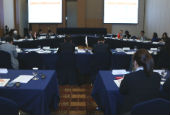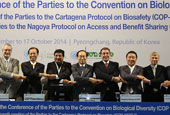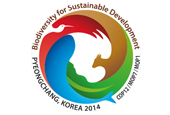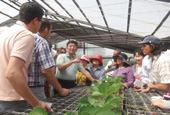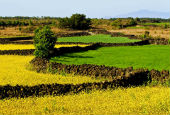Korean and Japanese farming specialists gathered in Korea to share research results concerning Globally Important Agricultural Heritage Systems (GIAHSs).
The professionals from the two countries held a workshop on "Traditional Agricultural Systems and Biological Diversity: GIAHS" in Pyeongchang, Gangwon-do (Gangwon Province) on October 7. The workshop was held on the sidelines of the 12th meeting of the Conference of the Parties to the Convention on Biological Diversity (CBD-COP12), which continues until October 18.
The Rural Development Administration (RDA) and the United Nations University's Institute for the Advanced Study of Sustainability from Japan jointly organized the workshop. Participants discussed their research results on agricultural heritage in the two countries and touched upon future research areas.
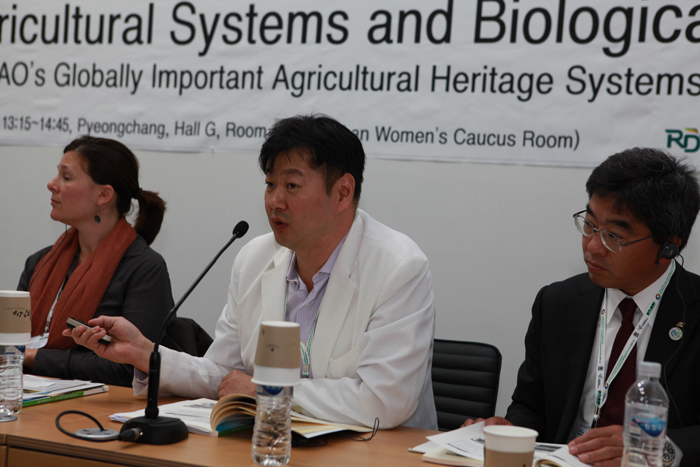
At the workshop, participants made presentations on: traditional agricultural systems and biodiversity in relation to agricultural heritage; the preservation of traditional farming methods and the environment; and, the conservation of biodiversity in the Satoyama-Satoumi ecosystems in Noto, Japan, and among the batdam black stone walls on Jeju Island.
The GIAHS project was started in 2002 by the U.N.'s Food and Agriculture Organization (FAO). It is designed to preserve important farming methods to be passed on to future generations and to select and conserve natural environments and farming areas featuring biodiversity. The features and selection criteria required to be registered as an agricultural heritage site are: food and livelihood security; biodiversity and ecosystem function; knowledge systems and adapted technologies; culture, value systems and social organizations; and, remarkable landscapes, land and water resource management features.
Currently from Korea, the Cheongsando heated ground rice paddies on Wando Island, in Jeollanam-do (South Jeolla Province), and the batdam black stone walls of Jeju Island are both listed as GIAHSs.
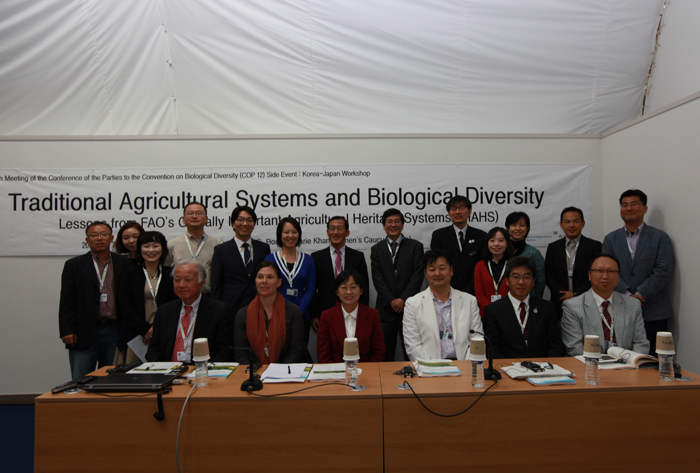
"We exchanged academic information about the preservation of agricultural biodiversity, a key criteria to be registered as an agricultural heritage site, and discussed ways to cooperate," said an RDA official. "It was an opportunity to discuss how to respond to GIAHS selection policies of the FAO and to contribute to the use of regional resources."
By Limb Jae-un
Korea.net Staff Writer
jun2@korea.kr

The professionals from the two countries held a workshop on "Traditional Agricultural Systems and Biological Diversity: GIAHS" in Pyeongchang, Gangwon-do (Gangwon Province) on October 7. The workshop was held on the sidelines of the 12th meeting of the Conference of the Parties to the Convention on Biological Diversity (CBD-COP12), which continues until October 18.
The Rural Development Administration (RDA) and the United Nations University's Institute for the Advanced Study of Sustainability from Japan jointly organized the workshop. Participants discussed their research results on agricultural heritage in the two countries and touched upon future research areas.

Korean and Japanese professionals exchange information on globally important agricultural heritage systems during the workshop on October 7. (photo courtesy of the RDA)
At the workshop, participants made presentations on: traditional agricultural systems and biodiversity in relation to agricultural heritage; the preservation of traditional farming methods and the environment; and, the conservation of biodiversity in the Satoyama-Satoumi ecosystems in Noto, Japan, and among the batdam black stone walls on Jeju Island.
The GIAHS project was started in 2002 by the U.N.'s Food and Agriculture Organization (FAO). It is designed to preserve important farming methods to be passed on to future generations and to select and conserve natural environments and farming areas featuring biodiversity. The features and selection criteria required to be registered as an agricultural heritage site are: food and livelihood security; biodiversity and ecosystem function; knowledge systems and adapted technologies; culture, value systems and social organizations; and, remarkable landscapes, land and water resource management features.
Currently from Korea, the Cheongsando heated ground rice paddies on Wando Island, in Jeollanam-do (South Jeolla Province), and the batdam black stone walls of Jeju Island are both listed as GIAHSs.

Korean and Japanese specialists gather to discuss research trends on GIAHSs in Pyeongchang, Gangwon-do, on October 7. (photo courtesy of the RDA)
"We exchanged academic information about the preservation of agricultural biodiversity, a key criteria to be registered as an agricultural heritage site, and discussed ways to cooperate," said an RDA official. "It was an opportunity to discuss how to respond to GIAHS selection policies of the FAO and to contribute to the use of regional resources."
By Limb Jae-un
Korea.net Staff Writer
jun2@korea.kr
